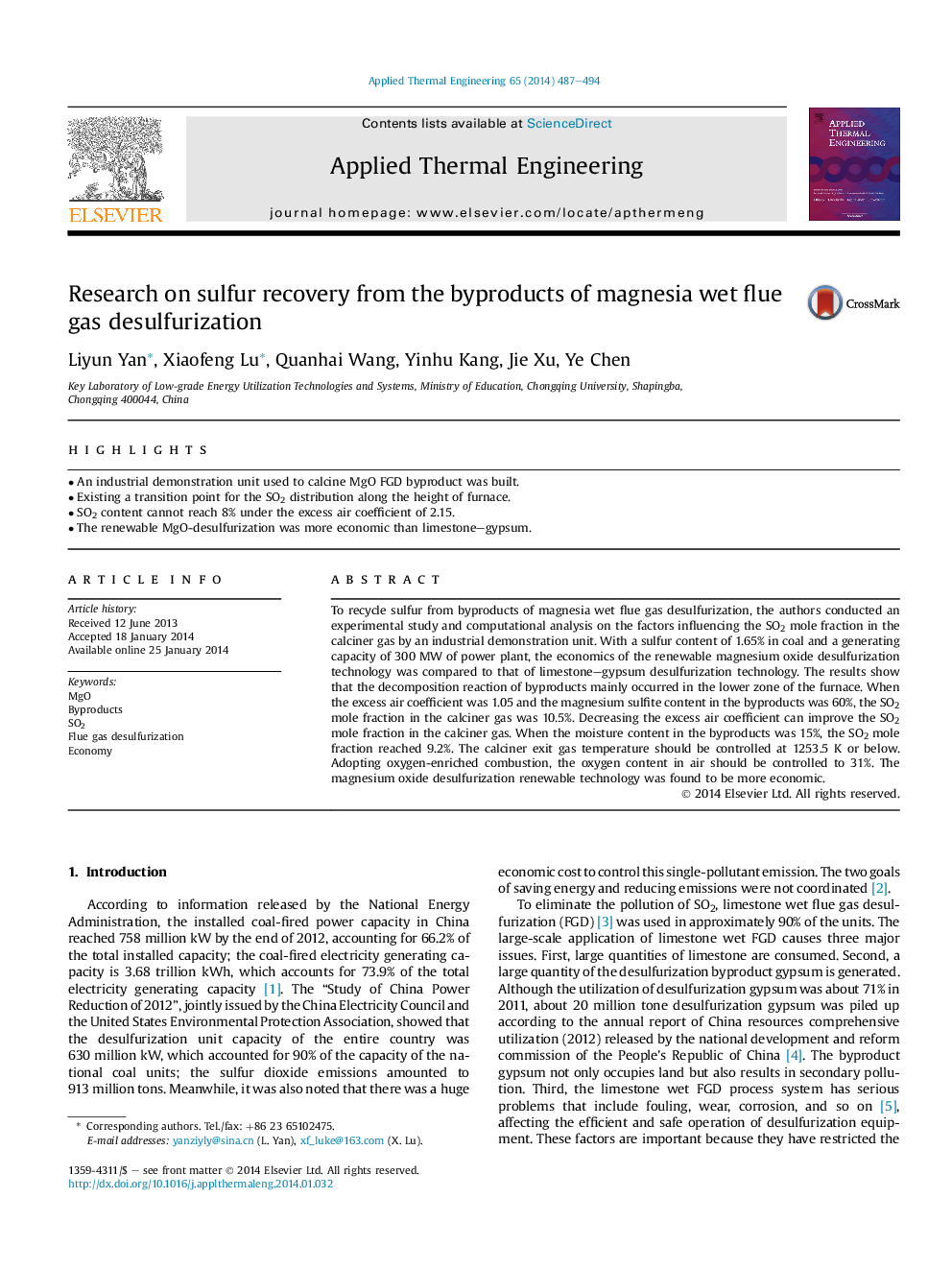| Article ID | Journal | Published Year | Pages | File Type |
|---|---|---|---|---|
| 7049478 | Applied Thermal Engineering | 2014 | 8 Pages |
Abstract
To recycle sulfur from byproducts of magnesia wet flue gas desulfurization, the authors conducted an experimental study and computational analysis on the factors influencing the SO2 mole fraction in the calciner gas by an industrial demonstration unit. With a sulfur content of 1.65% in coal and a generating capacity of 300Â MW of power plant, the economics of the renewable magnesium oxide desulfurization technology was compared to that of limestone-gypsum desulfurization technology. The results show that the decomposition reaction of byproducts mainly occurred in the lower zone of the furnace. When the excess air coefficient was 1.05 and the magnesium sulfite content in the byproducts was 60%, the SO2 mole fraction in the calciner gas was 10.5%. Decreasing the excess air coefficient can improve the SO2 mole fraction in the calciner gas. When the moisture content in the byproducts was 15%, the SO2 mole fraction reached 9.2%. The calciner exit gas temperature should be controlled at 1253.5Â K or below. Adopting oxygen-enriched combustion, the oxygen content in air should be controlled to 31%. The magnesium oxide desulfurization renewable technology was found to be more economic.
Related Topics
Physical Sciences and Engineering
Chemical Engineering
Fluid Flow and Transfer Processes
Authors
Liyun Yan, Xiaofeng Lu, Quanhai Wang, Yinhu Kang, Jie Xu, Ye Chen,
